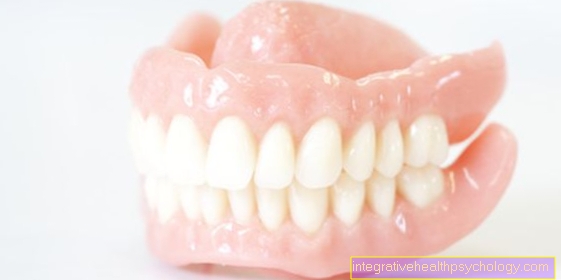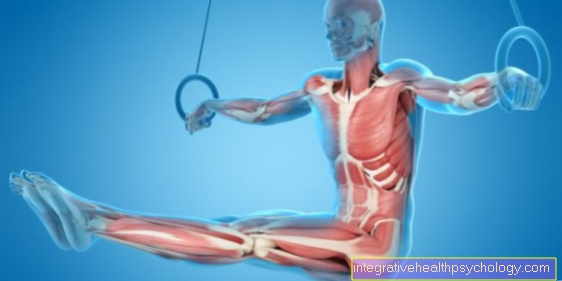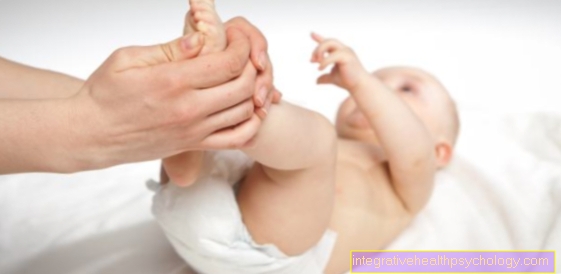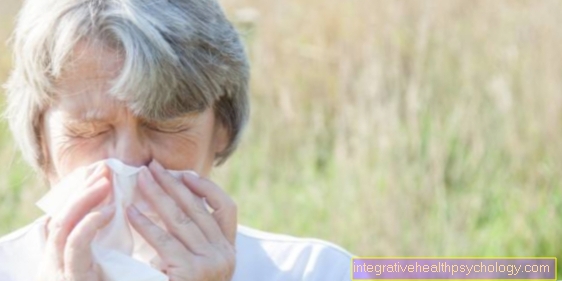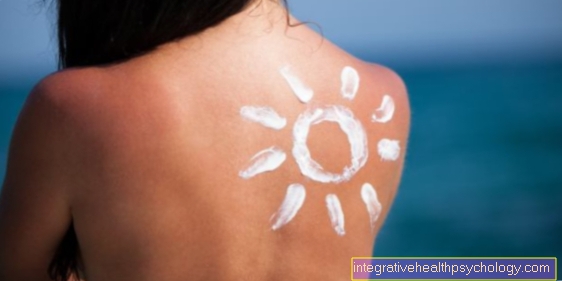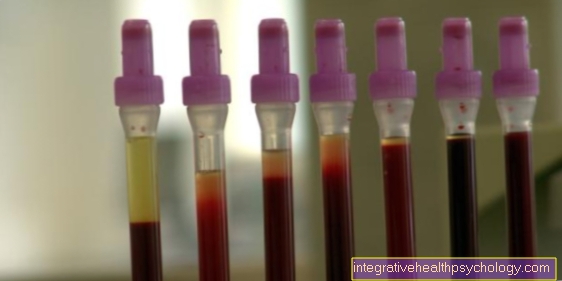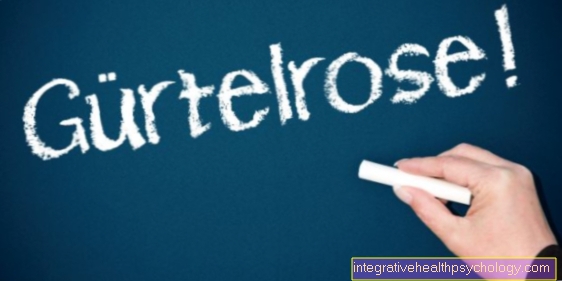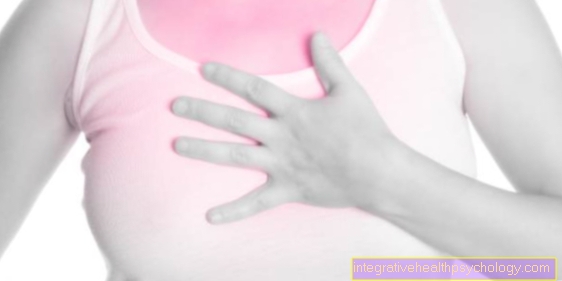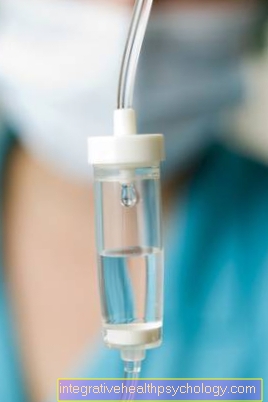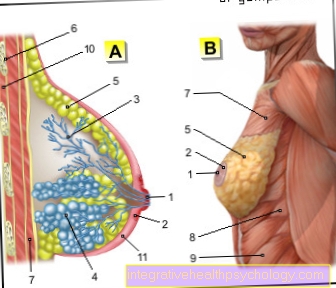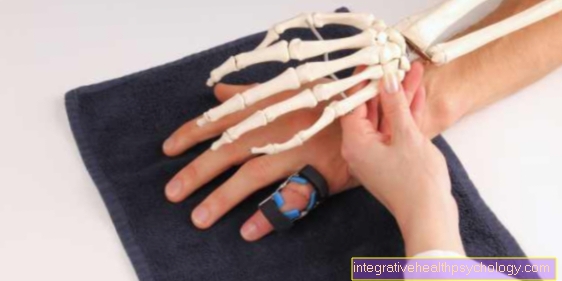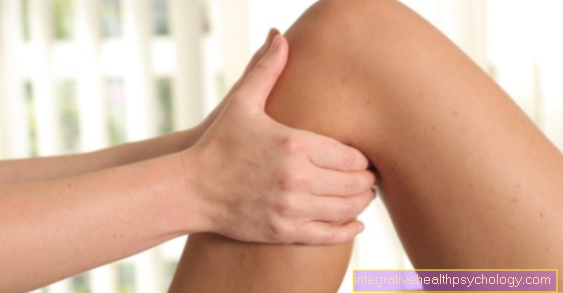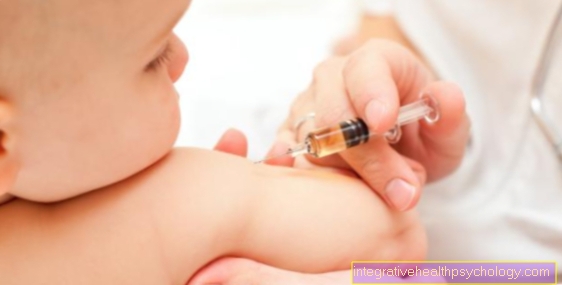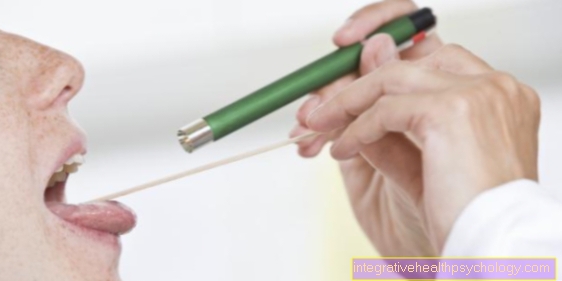What is Dupuytren's disease?
Synonyms
Dupuytren's contracture; Fibromatosis of the palmar fascia, Dupuytren's disease
English: Dupuytren's contracture
definition
Dupuytren's disease (Dupuytren's contracture) is a benign disease of the connective tissue of the palm of the hand and belongs to the clinical picture of fibromatoses. Usually the little finger and the ring finger are affected by the contracture. However, it is possible that the other fingers are also affected by the fibromatosis. The cause of the disease has not yet been found.
This disease was named after a French surgeon (Baron Guillaume Dupuytren). In the course of the disease, an inhibition of extension of the fingers occurs, which can also be called a flexion contracture, since the 4th and 5th fingers in particular can no longer be extended and thus remain in a bent position.
The clinical picture of Dupuytren's contracture is not locally limited. There are areas of the body that can be affected by similar fascia growths, such as
- Ledderhose's disease (plantar fibromatosis) = hardening of the soles of the feet.
- Peyronie's disease (induratio penis plastica) = hardening of the penis.
- Fasciitis nodularis = induration on the abdominal wall
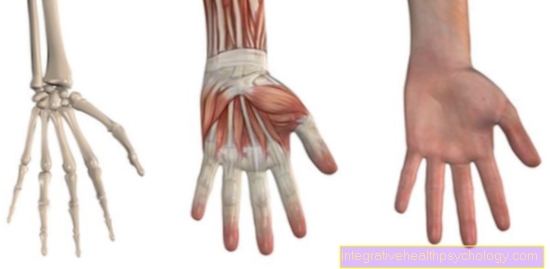
Epidemiology
In most cases, the disease occurs middle-aged men on. Only around 15% of those affected are women, who on average fall ill later than men.
Dupuytren's disease occurs predominantly in Central and Northern Europe, as well as in North America. The condition has been linked to alcoholism, tobacco smoking, and diabetes mellitus, but the exact cause is unclear. A genetic component is now considered to be certain, as there is a general strong familial accumulation. Furthermore, every third patient reports another illness in the immediate family.In most cases, the contracture affects the metacarpophalangeal and median joints of the little or ring finger. As a rule, the disease occurs on both hands.
What is Dupuytren's disease?
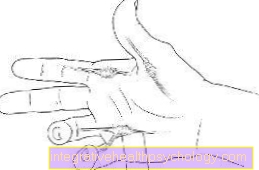
In the field of hand there is a strand-like layer of tissue (palmar aponeurosis) between the skin, the flexor tendons and the nerves. This layer of tissue has the task of protecting the tendons and nerves of the hand in extreme situations.
In the Dupuytren's disease - In the contracture, however, this is no longer guaranteed. The fascia tissue (= Connective tissue) begins to proliferate, harden and shorten. The formation of strands and knots in the palmar aponeurosis ultimately results in a flexion contracture, which inhibits extension of the finger triggers
Frequency and gender distribution
This disease is found more and more in northern Europe. People in the southern part (Mediterranean area) are rarely affected. It is estimated that in Germany about 1.6 million people have this condition. Here are Men over the age of 5 get sick about 10 times as often as women. Younger Dupuytren patients often have pronounced contractures of several fingers.
A familial accumulation can also be confirmed. In about ¼ of all cases, other family members are also affected by the disease.
Both hands are involved in 70 to 80% of all cases.
Appointment with a hand specialist?

I would be happy to advise you!
Who am I?
My name is dr. Nicolas Gumpert. I am a specialist in orthopedics and the founder of .
Various television programs and print media report regularly about my work. On HR television you can see me every 6 weeks live on "Hallo Hessen".
But now enough is indicated ;-)
In order to be able to treat successfully in orthopedics, a thorough examination, diagnosis and a medical history are required.
In our very economic world in particular, there is too little time to thoroughly grasp the complex diseases of orthopedics and thus initiate targeted treatment.
I don't want to join the ranks of "quick knife pullers".
The aim of any treatment is treatment without surgery.
Which therapy achieves the best results in the long term can only be determined after looking at all of the information (Examination, X-ray, ultrasound, MRI, etc.) be assessed.
You can find me at:
- Lumedis - orthopedics
Kaiserstrasse 14
60311 Frankfurt am Main
Directly to the online appointment arrangement
Unfortunately, appointments can only be made with private health insurers. I ask for understanding!
Further information about myself can be found at Lumedis - Dr. Nicolas Gumpert
root cause
However, the exact cause is still unclear.
What is certain is that the disease causes the palmar aponeurosis (connective tissue in the area of the palm of the hand) to harden and shrink.
Accidents or occupationally heavily stressed hands can possibly be linked to the occurrence of Dupuytren's disease. In men, the disease is also often associated with liver-toxic damage, for example through alcohol abuse. In addition, an increased incidence of contractures was observed in individual cases with long-term use of finasteride.
Although the cause is still unclear, the clinical picture is associated with diseases that have to be taken seriously. At this point, also read the article on the causes of Dupuytren's disease for detailed information: Causes of Dupuytren's Disease
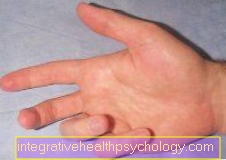
It is assumed that there is a combination of hereditary disposition and external factors such as microtraumas (= tiny injuries) or other predispositions.
Scientific studies have shown that in around 25% of all cases other family members are affected by the disease. As mentioned above, other factors are also likely to have an aggravating effect. For example, Dupuytren's disease is more common in:
Diabetes mellitus (diabetes)
- epilepsy
- Alcohol abuse
- Cirrhosis of the liver
In addition, Dupuytren's disease often occurs in combination with other rheumatic, autoimmune and fibroblastic diseases. These diseases include, for example:
- Induratio penis plastica
- Knuckle pads
The clinical picture is therefore not limited locally, although it is named differently in other parts of the body.
In genetically predisposed people, an open injury to the flexor hand or a fracture of the forearm or hand bone can lead to the development and development of the Dupuytren's disease accelerate. The breakage or injury as such is usually the trigger and not the cause.
Risk factors
In order to be able to make a detailed diagnosis, it is important that the patient explains all his complaints to the doctor. Also the questions about the comorbidities, such as Diabetes mellitus ("Diabetes"), Thyroid malfunction or gone through Fractures in the wrists are important.
Alcohol as a risk factor
Scientific studies have found that drinking two glasses of wine or beer a day is associated with an increased likelihood of developing Dupuytren's disease.
Alcohol abuse is considered a risk factor for the disease. That doesn't mean everyone with Dupuytren's disease drinks too much alcohol.
At the same time, low alcohol consumption can have a positive effect on the course of the disease.
Symptoms
The disease often begins with so-called falling asleep and "Ant running" (= Tingling) on the tip of the middle finger. The symptoms are triggered by a one-sided position of the wrist when making a phone call, cycling, etc. A short time later, the patient has the feeling of a swollen hand. Pain is felt in the whole hand, possibly also in the forearm. The pain mentioned occurs preferentially at rest, and consequently particularly often at night.
Since Dupuytren's disease belongs to the group of fibromatoses, this is also found in this disease Formation of knots and strands. Over time, these lumps and indurations gradually shrink.
This results in a flexion of the fingers, which can lead to functional impairment and pain. In the maximum manifestation of the symptoms, a pronounced flexion contracture of the proximal (close to the body) Interfinger joints (Interphalangeal joints) and at the same time an extension of the distal (distant) Interfinger joints (Interphalangeal joints). This maximum expression of Dupuytren's disease is also called Buttonhole deformity denotes and arises over many years.
course
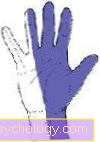
In the course of the disease, it is not just the nightly pain and abnormal sensations. The symptoms also appear increasingly during the day. In this regard, patients often report "clumsiness" and sudden "weakness" of the hand. The sensitivity of the skin on the thumb, index, middle and ring fingers is increasingly reduced.
In later stages it can be Loss of the ball of the thumb come.
Fortunately, the complete loss of feeling on the skin in the hand is very rare these days.
Stages
Most of them are over the years nodular changes and the Indurations palpablewithout causing any further symptoms. In some cases, the nodular changes may even regress over time. However, gradually develop Strands along the tendons, which mainly consist of collagen fibers. The strands increasingly prevent the fingers from stretching and thereby lead to typical flexion contracture of Dupuytren's disease.
To choose the right therapy, the Dupuytren's contracture is called in different stages assigned.
The extension deficit is measured as a deviation from the normal position. In order to be able to measure the entire deficit of the affected finger, the deficit is measured over each joint of the affected finger and the individual extension deficits are added to a total deficit. This definition goes back to Tubania. In the early stages, this definition was expanded.
- Stage 0 indicates a healthy hand.
- In stage N, there is still no stretch deficit, but knots and strands can already be felt.
- In stage N / I there is an incipient flexion contracture of 1-5 degrees.
- In stage I the contracture is between 6 and 45 degrees.
- In stage II a contracture between 46 and 90 degrees is described,
- in stage III between 91 and 135 degrees.
- All contractures with a stretch deficit greater than 135 degrees are assigned to stage IV.
As early as the third stage, the contracture can be so strong that the skin folds that result can no longer dry out and become inflamed.
Alternative diseases
If there is compression of the median nerve in the hand area, this can be determined by measuring the "nerve currents" (= ENG / electromyography at the neurologist (= neurologist, specialist in neurology).
Note: There is definitely the possibility that pressure damage to a nerve in the hand, shoulder and neck area can occur at the same time
X-rays / MRI of the hand
Although carpal tunnel syndrome cannot be diagnosed using an X-ray examination, this examination is still useful.
Often one finds other diseases that are associated with the carpal tunnel syndorm (e.g. a Arthrosis of the thumb saddle joint)
A MRI of the hand is in the most cases not useful.
Only in the case of one specific suspicion of a tumor is an elaborate investigation like a MRI of the hand makes sense.
The therapy
The usual conservative measures such as ointment bandages, physiotherapy with various exercises or massages have no prospect of success with this clinical picture.
In the very early stages, irradiation is therefore a good option for treating the contracture.
Furthermore, all affected tissue can be surgically removed as part of an open fasciotomy.
However, this invasive method is only recommended if the extension deficit is at least 45 degrees.
Needle fasciotomy is a minimally invasive therapeutic option. This is usually used up to a flexion contracture of 45 degrees. For stronger contractures, open fasciotomy is usually recommended. A newer therapy method is the injection of a bacterial collagenase. These are supposed to destroy the pitted strands enzymatically. Afterwards, the hand should be mobilized again through physiotherapy. However, the use of the enzyme is still in the testing phase and for this reason is not yet used regularly.
You can find an overview of all possible forms of therapy on our website: Therapy of M. Dupuytren
Homeopathy as a therapy option
There are some homeopathic globules that are used in alternative medicine to favorably influence the course of Dupuytren's disease. Calcium fluoratum globules should help with deformed, inflexible fingers. Strong patients are recommended to take barium carbonicum and slim patients to take strontium carbonicum.
Those affected suffer from stiff fingers and palms. Causticum, Ruta graveolens and Radium bromatum are homeopathic globules that are supposed to help alleviate the symptoms. Formica rufa globules can be taken for night pain.
Radiation as a therapy option
For patients with Dupuytren's disease, radiation can help slow or stop the progression of the disease. The affected areas of the hand or foot are irradiated with X-rays with a safety distance of up to two centimeters. Other parts of the body are shielded with lead and protected from the rays.
Radiation is particularly indicated in the early stages of the disease. The earlier the affected areas are irradiated, the better the prognosis. Radiation therapy is considered to be safe in the long term and, in contrast to an operation, leads to a cure or improvement of the symptoms in most patients.
The splint as a therapy option
In Dupuytren's disease, splints are often used after treatments. Some of the splints are worn during the day, but mostly at night.
Surgical splitting of the covering layer of the connective tissue and an aponeurectomy (removal of tissue from the tendons) are therapeutic options that typically require the wearing of a night splint. The night splints are intended to improve surgically achieved results in Dupuytren's disease in the long term.
Occupational therapy as therapy options
Occupational therapy is a therapeutic area in medicine that aims to improve motor and sensorimotor disorders.
Possible occupational therapy means for Dupuytren's disease are, for example, passive finger movements to improve mobility and special massages. There are massage techniques that loosen and stretch the hardened tissue. There are also various methods that promote blood circulation.
The operation of Dupuytren's disease
An operation for Dupuytren's disease leads to the best therapeutic success in the long term.
Various surgical techniques can be used for this. A basic distinction is made between incision and excision.
- During the incision, the connective tissue strands that formed in the palm of the hand and that led to the contractures of the fingers are incised, which again extends the fingers.
To prevent a new contracture after the operation, the incision is made in zigzag lines (so-called Z-plasty). - With the excision procedure, parts or the entire connective tissue plate of the palm are removed.
One of these options is dermofasciectomy. The affected area of the connective tissue plate and the overlying shortened skin are removed. Since this leads to a large tissue defect in the palm of the hand, a skin graft is then inserted there.
The most common procedure used is partial aponeurectomy. The entire affected tissue on the palm and fingers is removed.
In the case of partial fasciectomy, on the other hand, only parts of the hardened aponeurosis are operated on. In the further course of the disease, recurrences occur more frequently than if the entire fascia was removed.
The most radical procedure is the complete aponeurectomy. Both affected and unaffected fascia tissue from the palm and fingers are removed. This should reduce the risk of recurrence postoperatively. For a long time, this method was considered the method of choice, but today it is only preferred if the disease is severe. Due to the radical nature of the procedure, complications occur more frequently, which are observed much less frequently with partial aponeurectomy.
Depending on the severity of the disease, the finger joints must also be surgically treated and contractures there resolved. Postoperative follow-up treatment, which has a major impact on the long-term success of the therapy, is particularly important. It consists of immobilization of the hand and specific physiotherapy exercises and should be started around three to five days after the operation. The exercises restore the flexibility and mobility of the hand and prevent new scar contractures. The subsequent scar care is also important so that the scars remain supple and do not lead to renewed hardening.
You can find more detailed information under our topic: OP of an M. Dupuytren
Duration of healing after surgery
The time it takes to heal for Dupuytren's disease after surgery can vary. A quick start with physiotherapeutic exercises has a positive effect on the course of the disease and helps those affected to quickly regain the strength of the hand.
Most patients can go back to work after six weeks. Nonetheless, it typically takes a few months to fully heal.
Find out all about the topic here: Exercises for Dupuytren's disease.
How long will you be unable to work after the operation?
After an operation, the operated hand must be held in place with a splint for five days. During this time, the hand must be completely spared, after which an early start with physiotherapy is recommended.
There are different surgical options and the healing time may vary from person to person. However, most patients will be able to return to work about six weeks after surgery.
Post-operative exercises
In order to achieve the best possible result, it is important to start appropriate physiotherapy exercises early after the operation for Dupuytren's disease.You should discuss with the attending physician what exercises he recommends and develop a common plan. Both after an operation for Dupuytren's disease and as a conservative therapy method, various exercises for the hand are important to improve mobility.
First you should warm up your hands, for example by rubbing your hands together.
Since contractures of the palm and fingers occur in Dupuytren's disease, stretching exercises are particularly important. One possibility is, when the hand lies loosely, to stretch out each finger individually as straight as possible and hold it in this position for about 30 seconds. This should be repeated several times with each finger.
To increase the difficulty a little, you can also use the other hand to exert a slight counterpressure on the extended finger, so that the muscles have to work harder to keep the finger extended. This tension should also be maintained for about 30 seconds before switching to the next finger.
Forming a fist and then extending your hand is also a good exercise. This sequence of movements should also be repeated several times. In order to promote fine motor skills, it is advisable to touch the tip of the thumb with each finger one after the other and then stretch the finger out as best as possible. Here, too, several passes should be carried out in a row. Small exercise balls that can be pressed together by hand are also suitable for strengthening the hand muscles. It can be beneficial to shake hands properly between exercises.
Another possible exercise is rotating your fingers. Put your palms together so that the fingertips touch and let one or more pairs of fingers rotate alternately.
An important aspect of this self-treatment for Dupuytren's disease after the operation is the regular stretching of the fingers. Before and after the exercises you can stretch your fingers and palms specifically and hold the stretch for a few breaths.
One should note that one should not only perform the exercises with the affected hand, but that both hands must be observed. Depending on the severity of the disease, a suitable exercise can be selected from different exercises.
Find out more about the topic here: Exercises for Dupuytren's disease.
Summary
Dupuytren's disease is one benign change in the extensor tendons of the palm of the hand. Most are affected Little finger and Ring finger, usually on both hands. The increased formation of collagenous connective tissue in the area of the palmar aponeurosis causes knots and strands to form. These strands grow together with the tendons of the palm of the hand and thus significantly limit the function of the hand. The disease takes one up to the maximum extent of flexion contracture years of history a. Depending on the extent of the stretching deficit that has arisen, the disease is described in Tubania in different stages structured. Depending on these stages, the therapy decision is somewhat easier. Unfortunately, the usual physiotherapy therapies are useless, so next to the Irradiation in the early stages at the moment only those surgery as an additional therapy option. The operation can be performed either as part of an open fasciotomy or by means of a minimally invasive needle fasciotomy. Further therapeutic options, such as the use of various enzymes, are being tested.

